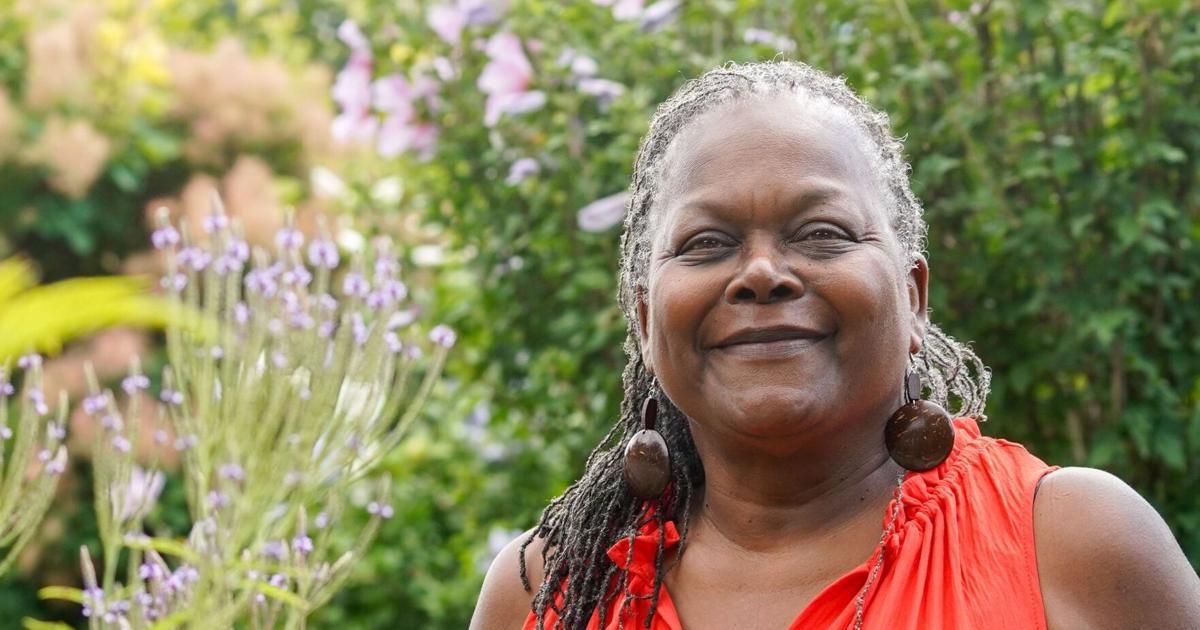Is there such a thing as âBlack gardening?â
Itâs a valid question, and the only way a white writer can answer it is by having the discussion with people who have firsthand knowledge. Those conversations are happening more often in Buffalo, partly due to the advent, in 2018, of the East Side Garden Walk in Buffaloâs predominantly Black neighborhoods.
It helps to know another writer who happens to be Black and whose book, âBlack Flora: Inspiring Profiles of Floriculture’s New Vanguard,â is being reissued by Timber Press in October.
âItâs the way we, as a culture, garden. It may not be everything in place. But itâs the way we want it … The pots may not be matching. The flowers may not be coordinated. We like to see it all mixed up,â said âBlack Floraâ author and gardener Teri Speight of District Heights, Md.

Buffalo has a garden tour culture thatâs unlike any other. Such tours in other cities are generally selective. They are organized by gardeners for other gardeners. Thereâs an upscale feel to them thatâs comes along with an entrance fee â though high tea might be thrown in. Buffalo was never that way.
Iâve been attending garden blogger meet-ups across the country with Teresa (Teri) Speight for about eight years now. And Speight has been traveling to Buffalo from her home in District Heights, Md., for nearly as long. Professionally active in the garden industry for decades, sheâs wielded both trowel and keyboard.
People are also reading…
She ran her own garden maintenance business and was senior gardener for the city of Fredericksburg, among other occupations, all the while publishing her observations in her blog (and podcast) Cottage in the Court. In addition to âBlack Flora,â she co-wrote âThe Urban Garden: 101 Ways to Grow Food and Beauty in the Cityâ with another Capitol District garden expert, Kathy Jentz.
That focus on urban gardening should help answer the question of why Speight keeps returning to Buffalo. She is fascinated by the gardens of Garden Walk Buffalo, which celebrated its 30th anniversary this year.
âThe gardens here are unique,â Speight says. âPeople show their personalities in their gardens. A lot of times at home, in the DMV (D.C., Maryland and Virginia), people have landscapers. The landscaper makes all the decisions. In Buffalo, I see people in their gardens. They can tell you what they have and name the cultivars. I keep coming back here because every time I come, Iâm inspired. This is a sanity check for me.â
Speight grew up in D.C., but her parents were from the Carolinas and her grandparents were sharecroppers there.
âThey would have cuttings in Chase & Sanborn coffee cans, in a boot, in an old bathtub,â she remembers.
As far as Speight is concerned, there is a way to define Black gardening, and when she attended the East Side Garden Walk, she experienced echoes of an eclectic personal aesthetic that was very familiar.
âIâve come repeatedly to Buffalo Garden Walk,â Speight says. âThatâs all I thought there was. And then I heard about the East Side walk and finally got to see it. I personally loved it. Itâs the way we, as a culture, garden. It may not be everything in place. But itâs the way we want it, the way we see gardens. And thatâs different. The pots may not be matching. The flowers may not be coordinated. We like to see it all mixed up.
âWe garden against the rules. We might just love a certain type of plant. I grew up with blue hydrangeas. That was the norm. It would be odd to see an African American home in the D.C. area without a blue hydrangea.â

Teri Speight shops at the Urban Roots garden store last week. âThe gardens here are unique,â Speight says. âPeople show their personalities in their gardens. … I keep coming back here because every time I come, Iâm inspired.â
But Speight has also observed inequities in how Black horticultural workers are treated in the industry, and thatâs why she wrote âBlack Floraâ â though she did not choose the title.
âIn a lot of the horticulture industries â cut flower growers, flower farmers â you would always see the notoriety of those who were not of color,â she says. âA lot of African Americans were flower farmers for white florists, but you would never hear about them. In 2020, the idea of writing about this was presented to me.â
âBlack Floraâ features 20 growers, florists and designers of color from around the U.S., with a foreword by horticulturalist and garden historian Abra Lee. Speight hopes to continue this exploration with a book exclusively about florists of color. She is concerned about the number who have gone out of business and â following her ongoing mission of awareness-raising â wants to do what she can to support them.
Encouraging entrepreneurship is something Speight thinks should be more of a priority in Buffalo. During her recent visit, she stayed at the Moreland Guesthouse, a former convent built in 1922. Located in the Lovejoy neighborhood, it now serves as a self-catering inn. Speight tries to stay in residential communities when she travels, to get a sense of daily reality that a downtown hotel doesnât really provide. But she admits having trouble finding a good range of amenities as she made her way around the East Side.
And before speaking at the Michigan Street African American Heritage Corridor headquarters last Wednesday, July 24, she attempted to do some local shopping.
âI was heading down Michigan Street â I wanted to eat down there and buy something. But there are no shops. I know itâs up-and-coming area, but bringing in entrepreneurs would lift up the community. And those vacant corner lots â someone should throw vegetable seeds in there. Do a scatter garden.â

Teri Speight take photographs of bubble bees on a sunflower on Thursday, July 25, 2024.Â
There are efforts to encourage small businesses on the East Sideâs commercial corridors, but it doesnât take an outsiderâs observation to realize that we have a long way to go. As an eternal optimist â like Speight â I think weâll get there.
These are the kind of discussions to have when outsiders come to Buffalo. Often visitors will offer hard truths. Sometimes there will even be unfair distortions. But if youâre lucky, youâll meet a Buffalo convert like Teri Speight, who chooses to return again and again and again.
Someone who says, âI want to bring this back home. To show whatâs possible.â









